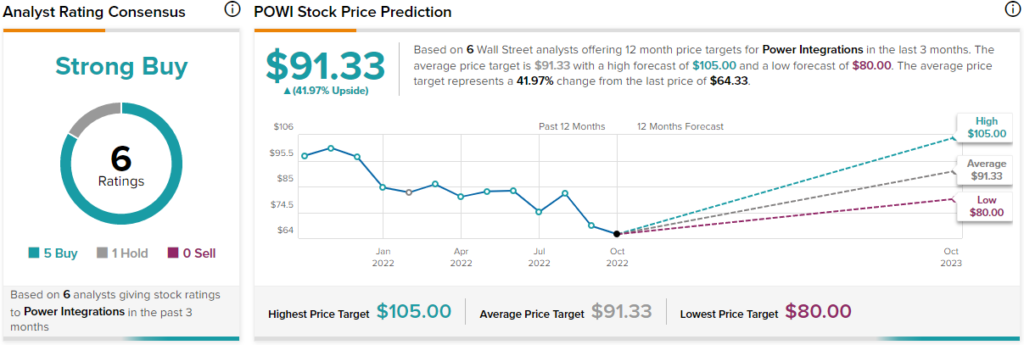Chip delivery times improved significantly in September, according to recent research by Susquehanna analyst Christopher Rolland. Two of the stocks that the analyst covered, including Broadcom (NASDAQ:AVGO) and Power Integrations (NASDAQ:POWI), look most well-placed to benefit.
In September, the average lead time (the period between an order being placed and the final product being received by the customer) narrowed by four days to 26.3 weeks. The average number was 27 weeks in August. This was the biggest contraction in delivery times in the current semiconductor cycle, indicating that the supply-chain bottlenecks that have tormented the chip industry might be easing.
Key product categories like power management and analog chips experienced the biggest declines in wait times.
Why are Semiconductor Lead Times So Long Presently?
In the past year, the beleaguered semiconductor industry has suffered global supply-chain issues, which led to rising delivery times. The delays in shipments finally took the shape of a massive shortage of chips all around the world, which affected a number of industries dependent on chips, like automakers and other digital manufacturers.
This shook demand, which weakened and further added to the mounting inventory in semiconductor companies. An aggravated demand slowdown was seen in the PC market, which made companies like Advanced Micro Devices (NASDAQ:AMD) and Intel (NASDAQ:INTC) suffer significantly.
Thus, the semiconductor industry has been locked in a diametrical situation where excess inventory and a supply shortage exist simultaneously. However, with the decrease in lead times, it appears that the monster bottleneck is slowly easing.
As the wait times for chips contract, here are two chip stocks that stand favorably in the coming months.
Broadcom (AVGO)
Although Broadcom’s wait times increased by four weeks, month-over-month in September, there was a year-over-year improvement in the lead time. In September, its lead time was 30 weeks, whereas the same month last year saw a record high of 31.5 weeks.
The company had earlier mentioned that 50-week lead times are potentially good for long-term order visibility. In Q3, Rolland confirmed via thorough checks that Broadcom’s products are still enjoying high demand, even now after PHYs (physical layers of semiconductors that acquire, process, and transmit information along pathways) were added to its product portfolio. Rolland also expects price hikes on the products in the coming months.
Is AVGO Stock a Buy or Sell, According to Analysts?
Rolland remains bullish on Broadcom, with a Buy rating and a price target of $680. Broadcom stock has a Strong Buy consensus rating on Wall Street based on 11 unanimous Buys. Moreover, the average price target of $668.00 indicates upside potential of 53.7% for AVGO stock.

Power Integrations (POWI)
In September, POWI saw a drop in lead times between six and 10 days month-over-month. Rolland is confidently expecting double-digit revenue growth this year for Power Integrations, driven by a solid lineup of product introductions and expanding SAMs (Serviceable Addressable Markets).
Rolland was also upbeat about the overall performance of power management companies (which include POWI), whose lead times fell by 16 days month-over-month. “We understand that demand easing in consumer markets has reduced constraints for the overall PM market,” explained the analyst.
Is POWI Stock a Buy or Sell, According to Analysts?
Power Integrations stock is a Buy, according to Rolland, with a price target of $98. Wall Street analysts are also bullish about POWI stock, with a Strong Buy consensus rating based on five Buys and one Hold. The average POWI stock price target stands at $91.33, indicating 41.97% upside potential.

Conclusion: Lead Time Improvements to Benefit Chip Stocks
Improving lead times reflect the fact that the backlogs are starting to clear. This means a lot of customers will receive their semiconductors quicker than they had anticipated for this year. This will stir demand afresh after being stuck in a rut due to the delays (and, at times, cancellations). This undoubtedly will mean an improvement in order rates and, thus, revenues as soon as the excess inventory dissipates.
















